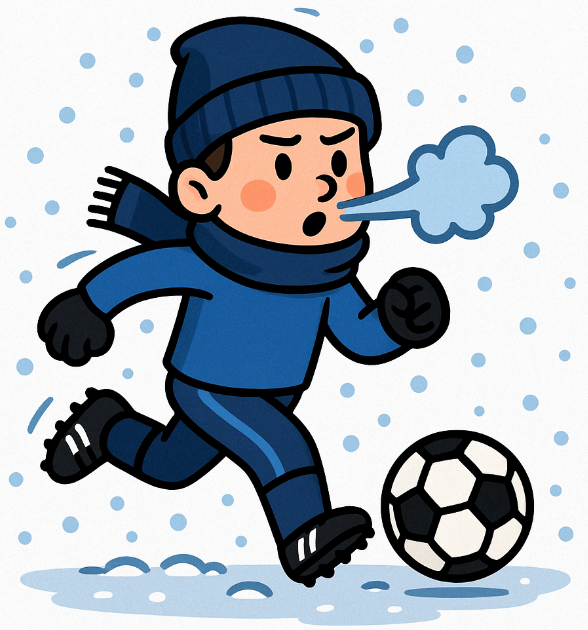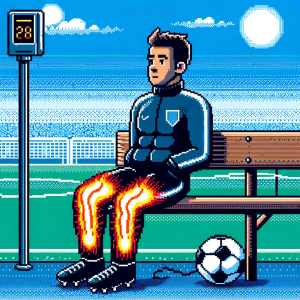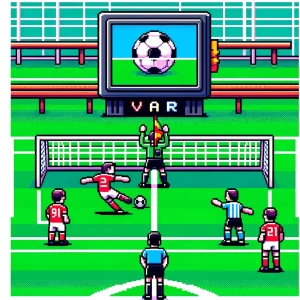
Weather-Proof Your Game
Why did our legs feel heavy today?” If you’ve ever said that after a sweltering away match or a trip to high altitude, you’re not imagining it. A new synthesis of 21 real-match studies on professional soccer reveals a clear pattern: heat, humidity, and altitude alter how players move—and smart teams adjust their pace to protect key moments.
Here’s the headline for coaches and directors: weather doesn’t just make players uncomfortable; it subtly reshapes performance. Understanding those shifts can improve training loads, match plans, substitutions, and player safety.
What the Research Says—in Soccer Terms
Researchers reviewed field studies (not just laboratory studies) on pros over 18 in live competitions. They tracked physical outputs (total distance, high-intensity running, sprints, top speed) and technical actions (passes, shots, duels, possession).
- Heat + Humidity: Teams often run less overall and perform fewer high-intensity bursts, but can keep top speed when needed. Technical quality (like pass success) often holds steady or even improves—likely because players slow the tempo and choose safer options. That’s pacing: conserving fuel to strike at the right time.
- Cold (<5°C): Little change in running performance. Players generally cope well.
- Altitude: Total distance and high-intensity distance drop, even for elite squads. Sprint counts/top speed? Often unchanged. Home altitude teams may gain an edge, and visiting teams tend to play safer passes.
- Sweet Spot: Peak soccer performance often occurs in cool to mild conditions (about 12–22°C) with lower humidity.
Bottom line: Pros self-adjust to maintain key match characteristics. They trade some high-intensity volume for better decisions and timely sprints.
What This Means for Your Team—Right Now
Use these findings to turn weather from a wildcard into a competitive edge.
- Plan Pace Like a Budget (Heat/Humidity)
- Train and play with a “burst budget”: accept fewer high-intensity repeats so that peak speed is available for critical moments.
- Use shorter, sharper drills (8–20-second efforts; longer rest periods) on hot days; avoid stacking long, high-intensity blocks.
- Key cue: “Slow the river to save the waterfalls.”
Why it works: Matches in heat show conserved top speed with fewer total sprints—players are already pacing. Coach it intentionally.
- Adjust Rotations and Roles (Altitude & Heat)
- Earlier rotations for wingers/fullbacks who carry sprint loads.
- Give midfielders clear “cool” phases (positional rest in block; slower circulation) between pressing waves.
- Micro-sub goals: If your league rules allow, target subs just before predicted intensity spikes (e.g., minute 60–70 at altitude).
- Rethink Pass Maps, Not Just Heat Maps
- In tougher environments, emphasize secure passing lanes and support angles. Pass success can stay high if you trim risk in the middle third.
- Script set-piece “oxygen plays”—free kicks/corners that buy recovery while staying dangerous.
- Session Design by Weather
- Hot/Humid: Prep with heat acclimation blocks (10–14 days of progressive exposure). Keep skill under light fatigue; finish with speed exposures (2–4 fly sprints).
- Cold: Warm-up longer, emphasize first-step speed; performance is generally stable—great time for tactical volume.
- Altitude (traveling team): If you can’t arrive 10–14 days early, consider the “fly late” approach (arrive <24h before kickoff) and cut early-session intensity. Keep sprint quality, shrink volume.
- Game-Day Safeguards (Performance = Safety)
- Cooling plan: shade, fans, ice towels, cold fluids; schedule hydration every 15–20 min when rules allow.
- Readiness checks: RPE, simple jump test, or 10-m sprint pre-match to spot “heavy legs.”
- Red flags: unusually high heart rates at low speeds; call tactical time-outs/water breaks to reset.
Connect to Bigger Trends
- Player Safety: Heat strategies aren’t just about winning—they reduce cramp, dizziness, and heat illness risk.
- Youth Development: Teaching pacing and role rotations helps young players learn game IQ, not just fitness.
- Data-Informed Coaching: Track environment and performance (temperature, humidity, elevation vs. sprints, HSR, pass percentage); adjust weekly periodization instead of forcing the same plan in all conditions.
Your Turn to Kick It Off
- How will you change substitutions or pressing triggers on hot away days?
- Which drill will you shorten or split this week to preserve top speed?
- What one metric (e.g., high-speed distance, pass%) will you pair with weather data to guide decisions?



